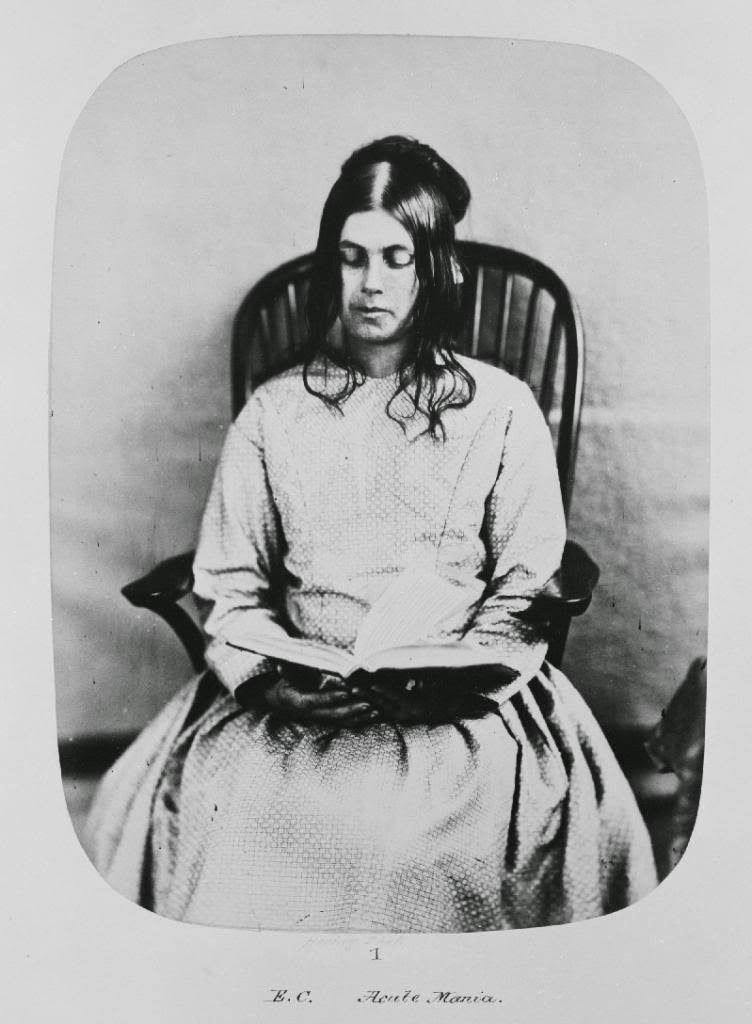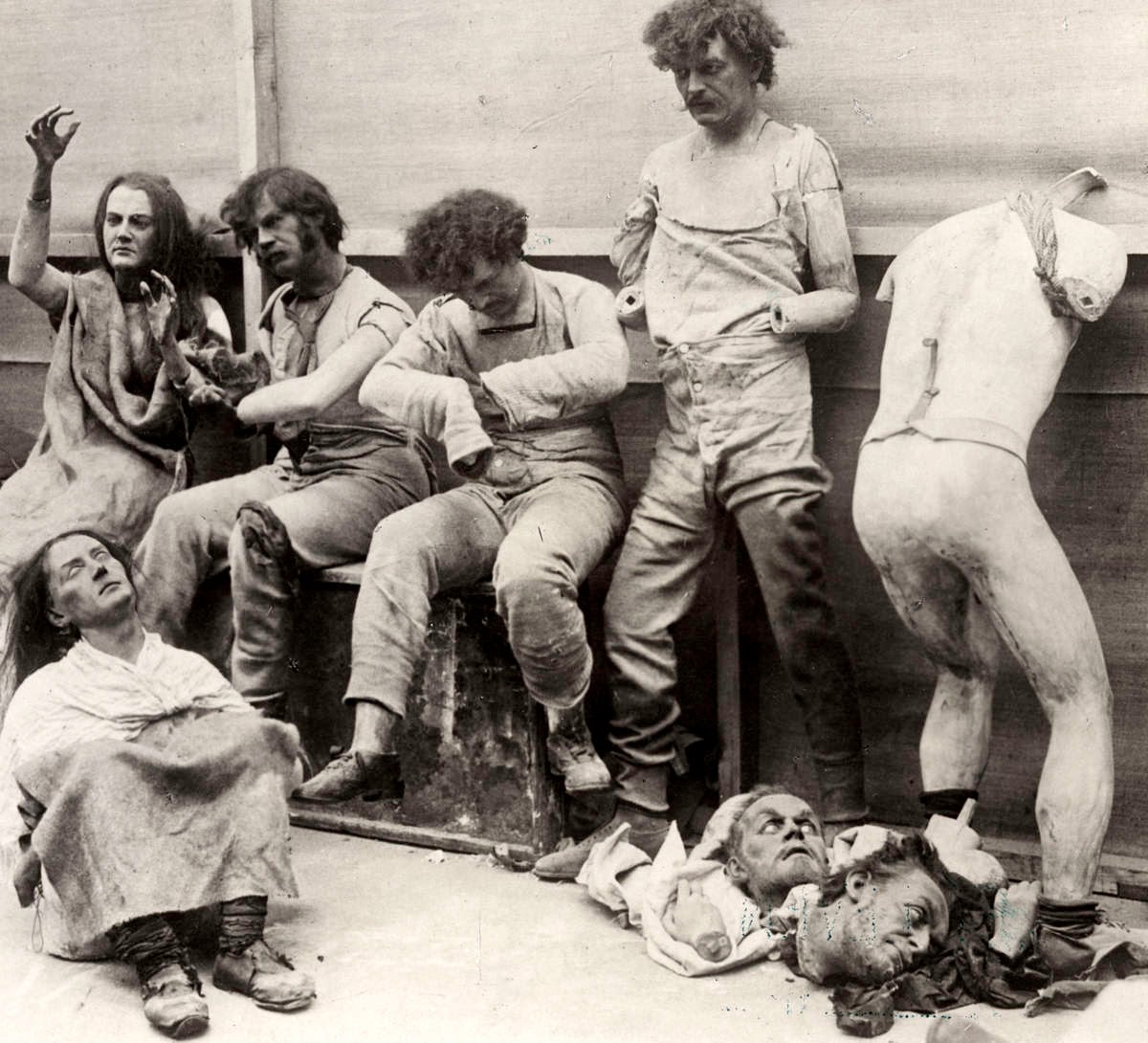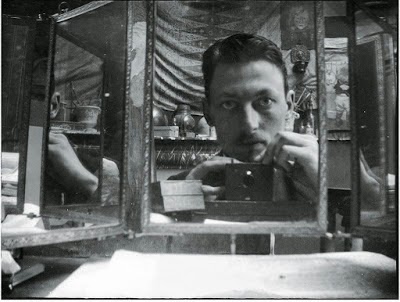Everyone knows that Victorian women were supposed to be chaste. Many people still consider female chastity a virtue, so in some ways little has changed. For me, it is impossible to look at any notion of gender in isolation. How can we talk about female sexuality without talking about male sexuality?
Victorian sexuality can be approached from so many directions, including (but not limited to)
body image, sexual orientation,
masturbation, prostitution, sex education, disease, religion, marriage, and pornography. All of these aspects overlap and influence each other, creating tremendous diversity in attitudes toward sex at any given point in history. Each of these factors provide the context in which sexual identities are created. This post is the second in a series of posts that seek to explore that context from the 1890s.
Sexual Orientation
"Sexual orientation" is the preferred term used when referring to an individual's physical and/or emotional attraction to the same and/or opposite gender. "Gay,""lesbian,""bisexual" and "straight" are all examples of sexual orientations. A person's sexual orientation is distinct from a person's gender identity and expression. - The Human Rights Campaign
For the purposes of this post, I will be looking at the sexual orientations of self-identified men in the 1890s, especially writers. There will be little discussion of trans-men because I have little information on the lives of trans people in London in the 1890s, though they certainly existed, and likely wrote many wonderful things. I encourage all of my readers to discuss 1890s trans authors' sexual orientations in the comments of this post.
![]() |
| Oscar Wilde and Lord Alfred Douglas |
1890s London was an extremely heterosexist place to live and be. It was also the most interesting and scary time of the century, in terms of discussing sexual orientation. Male homosexuality, as it exists today, was, in many ways, invented at this time. Of course, the history of male homosexuality dates way back before the 1890s, but at least two major events happened in 1890s London that would shape male homosexual culture for the next hundred years. Oscar Wilde's infamous trials occurred in 1895, and Havelock Ellis's translated Sexual Inversion (1897) became the first English medical textbook on homosexuality.
![]() |
| Robert Ross at age 24 |
When I say that male homosexuality was invented, I mean that without differentiating labels of sexual orientation, we are all just sexual human beings. Men certainly didn't need the label of 'homosexuality' to be openly attracted to other men.
Robbie Ross was relatively open about his sexuality before the 1890s, he was discriminated against and bullied at school, and embraced by his family. It was the ways that heterosexist society understood male homosexual attraction that were changing.
Heterosexist society is only capable of understanding homosexuality from within the context of heterosexuality. It normalizes heterosexuality, but at the beginning of the decade even heterosexuality was a problem.
![]() |
| The Elder's Happy Home (1881). |
'The sexual problem' and 'varietism' were a couple of the terms used in alternative journals to discuss what was most commonly being referred to as 'the marriage question.' Of course, marriage to a woman was the ideal goal of male sexuality in the 1800s. The marriage question's main focus was divorce, though it was expanded to include polyamory, and the complications involved in legalizing extramarital relationships to legitimize the children born of these relationships. Essentially, it struggled with the problem of men who were sexually attracted to people other than the woman they married.
W. Somerset Maugham's first novel, Liza of Lambeth (1897) tackles the marriage question by outlining many of the ways in which working-class Londoners struggled with the institution of marriage, and the ways in which marriage regulated heterosexual sex. At one point, Liza's lover even considers bigamy.
![]() |
| Hall Caine and Family (1890s). |
Living as man and wife outside of marriage was more common than most people think in the Victorian Era. (George Elliott) Mary Ann Evans' partner, philosopher and critic George Henry Lewes was already married when he met Evans, but had an open marriage, and was unable to get a divorce, so he lived with Evans, as if they were man and wife. Hall Caine's wife, Mary Chandler was only 13 when they met, and too young to get married. They lived together, had children, and people assumed they were married, although they couldn't and didn't get married until she was almost of age.
Evolutionary theory provided fascinating new ways to think about those problems. The Darwinian Revolution was changing the way that people thought about life, the universe, and everything. As soon as it was published, it began to permeate fiction. By the 1890s, young writers had inherited a body of work to build off of that had created scenes and plots that adopted natural selection as part of human mating rituals.
![]()
Darwinian courtship narratives featured, as
Bert Bender put it, 'aggressive, eager, and possessive males and coy females; males participating in the "law of battle"; or scenes of music and dance that dramatized Darwin's theories on sexual attraction and biological beauty." Darwinian courtship narrative were also applied to real life.
Scientists used theories of evolution to naturalize perceived differences between men and women, especially in terms of courtship and sexual attraction. The dance floor became a metaphorical jungle for men and women's animalistic instincts. In
my post on dancing, I discuss the scenes of music and dance that provided middle- and upper-class men one of the rarer opportunities to meet single women their mothers would approve of because those women occupied entirely different spheres of London life than their male counterparts. Most discussions on the separate spheres of Victorian life emphasize the restrictions that this highly gendered society imposed on women, but many Victorian men hardly ever got the chance to meet a woman they weren't related to. When they did, their were guides to help them through it, like
Flirting Made Easy (1882).
![]() |
| From Flirting Made Easy (1882). |
Although Flirting Made Easy is called a guide for girls, the text is clearly directed toward men, and echoed Darwinian courtship narratives found in fiction.
Mrs. Humphry, Manners for Men (1897) describes the ideal man as the product of evolution, defined through his abilities to deal with all of the elements presented to him in the masculine spheres of society.
It was once said by a clever man that no one could be a gentleman all round who had not knocked about the world and associated with all sorts and conditions of men, high and low, rich and poor, good and bad. Experiences like these are like the processes for refining gold. The man who emerges unharmed from the fire of poverty and its associations, and who retains his independent manliness in relations with those high-place, must have within him a fibre of strength that is the true essence of manliness.
In this, we also have the idea of men knocking about with men becoming more manly men, which seems to reinforce the righteousness of a separate spheres ideology, in the midst of which a man could go to certain theatres, streets, hotel lobbies, and hire a 'rent boy.' Rent boys were young male prostitutes.
![]()
In the 1880s, 'the social purity movement' sought to contain the many manifestations of male lust, including prostitution. In 1885, they pushed through legislation that would ruin Wilde's life ten years later. The main intention of the legislation wasn't on regulating homosexuality (most of the movements supporters likely had little idea that such relationships existed). The legislation's main intent was to protect young girls from indecent assaults. Section 11 of the Criminal Law Amendment Act of 1885 revised the age of consent for girls from thirteen to sixteen (so until 1885, there was nothing legally wrong with Caine's relationship with Chandler). The law was also amended to make any indecent assault punishable by making 'gross indecencies,' regardless of age, punishable as a misdemeanor. Consequently, the vague wording was interpreted more broadly to apply to consensual same-sex acts between adults, which is what Wilde was sent to prison for in 1895.
I keep saying that most people in this heterosexist society didn't know anything about homosexuality, so that it was as if homosexuality didn't exist. Clearly, men who were interested in such encounters found them, and a dialogue was beginning to emerge. Richard von Krafft-Ebing first introduced the word 'homosexual' to the language through his English translation of Psychopathia Sexualis in 1892. A more popular word among homosexual men, at the time, was 'Uranian,' which emerged in poetry that referred to a third sex, which placed a female psyche in a male body.
The widespread belief that homosexual men are more feminine emerged during this time, and was reinforced through Ellis and Wilde.
Before Wilde was identified as a homosexual, the traits that we've grown to associate with homosexual culture were regarded as part of the culture of refined gentlemen, living an artistic life. Wilde was flamboyant, he cared about his hair, his clothes, his wife's clothes, he edited a woman's magazine, he wrote for the theatre... Ladies loved Oscar Wilde so much that he hired a guy with hair like his to travel with him on his American tour, so that he might be able to fulfill his many female fans' requests for locks of hair without having to cut any of his own. He was a masculine sex symbol at the beginning of the 1890s - not in spite of his aestheticism, but because of it.
![]()
At the end of the decade, the characteristics that made Wilde so masculine and sexy to women were associated with what Ellis called 'sexual inversion.' In his book, Ellis provided what is considered my many to be the first objective assessment of the sexual relations of homosexual men, including men with boys. Ellis didn't characterize homosexuality in terms of morality, or as a disease. It did, however, create a link between homosexuality and child abuse that has been difficult to reverse. There was
no evidence then, or now, to suggest that homosexual men were, or are, more likely to abuse children than heterosexual men.
Child abuse was approached much differently in the 1880s and 90s than it is today, as illustrated through the beginning of Caine's relationship with Chandler (who eventually became his wife). Chandler's father ran a restaurant, and was called on to deliver a sandwich to Caine. After delivering the sandwich, Chandler's father (rightly or wrongly) believed that something sexually inappropriate had occurred between Caine and 13 year-old Chandler. Because he now viewed his daughter as sexually impure, he insisted that she was to be Caine's responsibility from that day forward.
Other cases in the UK and throughout the colonies, provide examples where parents sought monetary compensation in addition to an arrangement where the pedophile had access to their child victim. It was cases like this that the 1885 law sought to prevent. Pedophilia is not considered a sexual orientation today, but rather a paraphilia, or 'a condition characterized by abnormal sexual desires, typically involving extreme or dangerous activities.' It wasn't considered a sexual orientation in the 1890s either, if only, because people were still trying to figure out what sexual orientation was.
![]() |
Three Yale men in drag; New Haven, CT (1880).
This photo likely had nothing to do with
sexual orientation, just some young men
dressing up as women for a photo. |
Because 1890s London was such an extremely gendered and heterosexist society, anything outside of reproductive sex within a marriage was considered a vice, and needed to be repressed. Of course, the people within that society were still people with all kinds of sexual urges, as is clear through the lives of the writers presented here, like Oscar Wilde, Robbie Ross, Hall Caine, and Bram Stoker.
By today's standards, Oscar Wilde would most likely identify as bisexual because he did love women, including his wife, Violet Hunt, and Florence Balacombe (the future Mrs Stoker). He also loved Lord Afred Douglas, and Robbie Ross.
Robbie Ross was a homosexual before there was a word for it, and is perhaps one of the first gay activists. During the First World War, he even mentored a group of primarily homosexual poets and artists, which included Siegfired Sassoon and Wilfred Owen.
Hall Caine was also probably bisexual. He had many children with his young wife, but he also had many extramarital love affairs with men.
Although it's popular to insist that Bram Stoker was also into men, I would argue that he was probably a very typical heterosexual gentleman. There's no evidence that he ever cheated on his wife. He had romantic friendships with men, like Walt Whitman, which could rightly be considered an infatuation. However, he spent the majority of his married life away from his wife, which gave him ample opportunity to act on any extramarital urges he might have had, and didn't. I think that those romantic friendships were simply characteristic of a time when men weren't afraid of being considered homosexual because no one really knew what homosexuality was.
![]()
Of course, I am transposing contemporary ideas of homosexuality, bisexuality, and heterosexuality onto historical figures, which is a pretty anachronistic thing to do. In 1890s heterosexist society, if sexual orientation had anything to do with a man's identity, he most likely viewed it in a Jekyll and Hyde way, meaning he would Hyde any parts of himself that didn't fit with the heterosexist expectations of respectable life. He may still engage in those activities, but he would be very careful about letting anyone know about it.
Follow me on Twitter @TinyApplePress and like the Facebook
page for updates!
If you have enjoyed the work that I do, please consider supporting
my Victorian Dictionary Project!



















_01.jpg)



















































_188_unknown_photographer.jpg)



































.jpg)














































